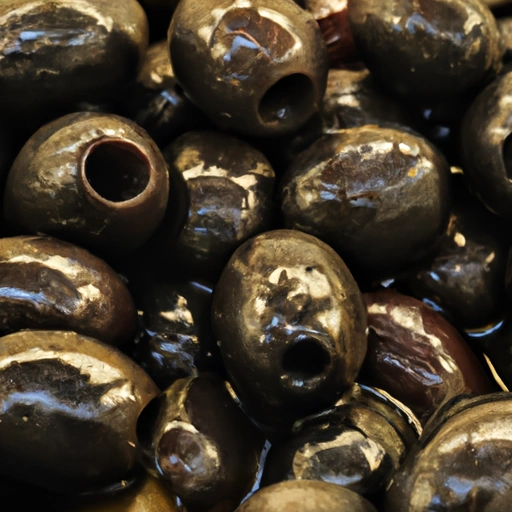Ripe Olive
Description

Ripe olives, often referred to as black olives, are a staple in many global cuisines, cherished for their rich flavor and versatility. These olives have fully matured on the tree, hence their darker color, and are typically harvested at the peak of ripeness before being cured and packed for consumption. Ripe olives are available in various forms, including whole, pitted, sliced, and chopped, making them a convenient ingredient for an array of culinary applications.
Common uses
Ripe olives are commonly used in salads, pizzas, pastas, sandwiches, and as a garnish for cocktails like the classic martini. They are also a key ingredient in tapenade, a traditional Provencal spread made from finely chopped olives, capers, and olive oil.
Nutritional value
Calories
Approximately 115-145 calories per 100 grams (3.5 oz) or about 25-35 calories per 15 grams (1 tbsp).
Protein
Contains about 0.8-1 grams of protein per 100 grams (3.5 oz).
Fat
Ripe olives contain about 10-15 grams of fat per 100 grams (3.5 oz), predominantly healthy monounsaturated fats.
Carbohydrates
Typically, there are 6-8 grams of carbohydrates per 100 grams (3.5 oz), with a minor amount of fiber.
Vitamins
Ripe olives are a good source of Vitamin E, with smaller amounts of other vitamins such as Vitamin A.
Minerals
They provide minerals like iron, calcium, and potassium in varying amounts depending on the curing process and variety.
Health benefits
Consumption of ripe olives can contribute to heart health due to their monounsaturated fat content. The presence of antioxidants like Vitamin E helps protect cells from oxidative damage. Additionally, the fiber in olives can aid in digestive health.
Potential risks
While ripe olives offer several health benefits, they are also high in sodium, which can be a concern for individuals with hypertension or heart disease. It is essential to consume them in moderation, particularly if following a low-sodium diet.
Common recipes
Ripe olives are featured in Mediterranean dishes such as Greek salad, Italian puttanesca sauce, and Spanish tapas. They are also a common topping on American-style pizzas and subs.
Cooking methods
Olives can be used fresh from the can or jar, or they can be baked, sautéed, or grilled to enhance their flavor profile.
Pairing with other ingredients
Ripe olives pair well with various cheeses, tomatoes, citrus fruits, and herbs like rosemary and thyme. They also complement proteins such as chicken, fish, and lamb.
Summary
Ripe olives are a beloved ingredient worldwide, known for their distinct flavor and health benefits. They add depth to a variety of dishes, from simple snacks to complex entrees, and are enjoyed in both traditional and modern recipes. While they are nutritious, it is important to consider their sodium content and enjoy them as part of a balanced diet.